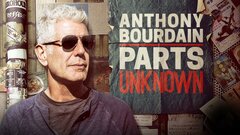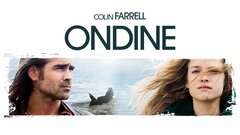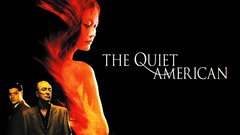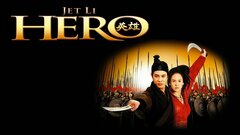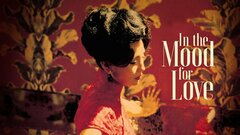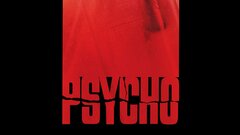Able to create smooth, flowing images onscreen in stark contrast to his kinetic nature, cinematographer Christopher Doyle has throughout his career shot some of the most memorable films in recent cinema history. His incessantly moving camera and manipulation of light, color and shadow mirrored a dynamic personality that ceased to rest even while having beer for breakfast (his hard-drinking reputation was well-earned.) Doyle's fastidious work ethic led him to take extreme measures to produce quality work - 50-plus takes, long waits for perfect natural lighting and never-ending searches for the right locations were regular occurrences with Doyle. But his perfectionism paid off, earning him many disciples over the years and - thanks to his longtime collaboration with director Wong Kar-wai - helping to create an insatiable hunger for Asian cinema.
Born and raised in Sydney, Australia, Doyle was the oldest of five children parented by doctors. He showed his eccentricity at an early age, purposely speaking English without his Australian accent. His love of Asian cultures also developed in his youth, through extensive reading of Japanese literature. When he reached 18, Doyle joined the merchant navy and sailed the world for two years. He landed in Israel, where he herded cows, then moved on to India, where he became an oil driller.
Eventually, he landed in Taiwan to study Chinese. He also indulged in his favorite pastime - drinking - and began hanging out with the more artistic elements on the island, including director Edward Yang, who trusted him enough to shoot "That Day on the Beach" (1983) despite Doyle not having a credit to his name. He knew next to nothing about shooting film, fumbling his way along, but somehow he got through and managed to win the Best Cinematography award at the 1983 Asian-Pacific Film Festival, unexpectedly turning Doyle into a professional cinematographer.
Following his surprising win at the Asian-Pacific Film Festival, Doyle went to Paris to study the theoretical side of cinematography, but he was restless and left to learn on his own. After shooting "Noir et Blanc" (1986) in France, he returned to Hong Kong to film "Laoniang Gou Sao" (1986), which earned Doyle his first Hong Kong Film Award for Best Cinematography. Doyle then started his collaboration with Wong on "As Tears Go By" (1989), a tragic romance between a young woman (Maggie Cheung) and a gangster (Andy Lau) that benefited from Doyle's stark and gritty camerawork. He solidified his signature style of extreme angles, handheld camera movements and deeply saturated colors in Wong's next film, "Days of Being Wild" (1991), a dark psychological drama about a young man (Leslie Cheung) ignoring the attentions of two women (Maggie Cheung and Carina Lau) who eventually seek out other men. Doyle earned his second Hong Kong Film Award for his effort.
Doyle continued working exclusively in Southeast Asia, filming "The Peach Blossom Land" (1992), "Red Rose, White Rose" (1994) and "The Red Lotus Society" (1994). He reunited with Wong a third time on "Chungking Express" (1994), the director's award-winning comedic drama focusing on two cops loosely connected by a fast food restaurant as they both cope with failed love affairs. Doyle's reputation - and quality of work - grew with his next two projects with Wong, "Ashes of Time" (1994), a lyrical martial arts adventure with an ensemble cast of Hong Kong heavyweights, and "Fallen Angels" (1995), a gritty urban drama about a hired gun suddenly feeling the pressure from his female boss, especially as they fall in love. "Ashes of Time" earned Doyle his first Golden Horse, while "Fallen Angels" gave him his fourth Best Cinematography statue at the Hong Kong Films Awards. On "Temptress Moon" (1997), Doyle's hypnotic camera movements and splashes of dark mixed with gauzy colors helped elevate an otherwise mediocre film, earning him a nomination at the Hong Kong Film Awards.
After a side trip to South Korea to film "Motel Cactus" (1997), Doyle returned to working for Wong on "Happy Together" (1997), creating a look that went from black and white to striking color, while speeding-up and slowing down the film in order to convey the emotional turbulence of a romance between two men (Tony Leung and Leslie Cheung) that slowly disintegrates. Once again, Doyle was nominated for a Hong Kong Film Awards and won a second Golden Horse Award for Best Cinematography. Doyle took the unusual step of doing second unit duty on Wayne Wang's "Chinese Box" (1997), then delving further into uncharacteristic behavior when he made his first working sojourn to the United States, filming Gus Van Sant's shot-for-shot rehash of Alfred Hitchcock's "Psycho" (1998). The remake was made all the more unusual, with Doyle trying to restrain his natural instincts to improve and improvise in order to stick with Hitchcock's original shots. Notably abhorrent to working for Hollywood - the idea of filming something like "Jurassic Park" was particularly vile - it was strange that he opted to work on something as blatantly Hollywood-esque as a remake of a classic and well-loved film.
Doyle became a first time director on his next project, "Away With Words" (1998), which he shot in varying shades of blue. The film was a loosely plotted story about a man (Tadanobu Asano) who jumps ship in Okinawa and stumbles into a dive bar, where he meets and falls in love with the gay, drunken owner (Kevin Sherlock) after several rounds of beer and reminiscing about their childhoods. He continued his newfound desire to branch out beyond the ordinary when he signed on to shoot Barry Levinson's "Liberty Heights" (1999), a coming-of-age drama set in the mid-1950s that did much to bring out the cultural divide between the Asia-centric Aussie and his America collaborators.
Doyle returned to Hong Kong for Wong's next film, "In the Mood for Love" (2001), a stunning and beautiful romance that could, in retrospect, be Doyle's finest work. Utilizing sultry slow-motion, intimate angles and suffocating close-ups to heighten the longing between two would-be lovers (Maggie Cheung and Tony Leung), Doyle painted a lush palette of unforgettable images, particularly a slow-motion close-up of Cheung's legs ascending a set of stairs that burned itself into the moviegoers' collective memories. Doyle once again earned a Golden Horse and was nominated for several other awards.
In another stunning turn, Doyle traveled to his native country to shoot his first Australian film, "Rabbit-Proof Fence" (2001), Phillip Noyce's real-life adventure drama about three aboriginal girls and their long walk home through the scorching desert after being removed by the government's 1930 assimilation policy. Doyle's sun-drenched images and hand-held movements heightened the emotional and physical journey of the characters. After filming the insignificant Vince Vaughn/Jon Favreau mob comedy "Made" (2001), Doyle reunited with Noyce for the director's excellent adaptation of Graham Greene's espionage novel, "The Quiet American" (2002), which benefited from the cinematographer's fluid style and splashing colors to bring alive the chaos of Saigon at the height of Vietnam's fight for independence from French rule.
For his next film, "Hero" (2004), Doyle and director Zhang Yimou - their first collaboration - used specific colors (red, green, blue and white) to frame the "Rashomon"-like tale about the shifting story of a lawman (Jet Li) and his pursuit of the emperor's most feared enemies, the assassins Flying Snow (Maggie Cheung) and Broken Sword (Tony Leung).
After filming Pen-ek Ratanaruang's moody drama "Last Life in the Universe" (2004), which added an elusive, dream-like texture to the images, Doyle reunited with Wong in what could very well be their last collaboration, "2046" (2004). The film was the director's haunting - if overlong - follow-up to "In the Mood for Love." Doyle employed much of the same techniques as its predecessor, using tight close-ups and odd angles to capture Ziyi Zhang's energetic performance as a prostitute who engages in a contentious relationship with a science fiction writer (Tony Leung) like a lightning bug in a jar. But the story lacked the desperation and painful longing that Doyle so brilliantly manipulated in its predecessor. The five year shoot put Doyle off from working with Wong again - at least for the short term.
Meanwhile, an unusual pairing with James Ivory and Ismail Merchant on "White Countess" (2005) was followed with a collaboration with director M. Night Shyamalan on "Lady in the Water" (2006). While Shyamalan failed to capture critics and audiences with his incoherent tale about an apartment superintendent (Paul Giamatti) who finds a water nymph (Bryce Dallas Howard) and tries to help get her back to her own world, Doyle managed to make a dumpy Philadelphia apartment complex look ethereal, while turning Howard's water nymph into a glowing otherworldly being.






















